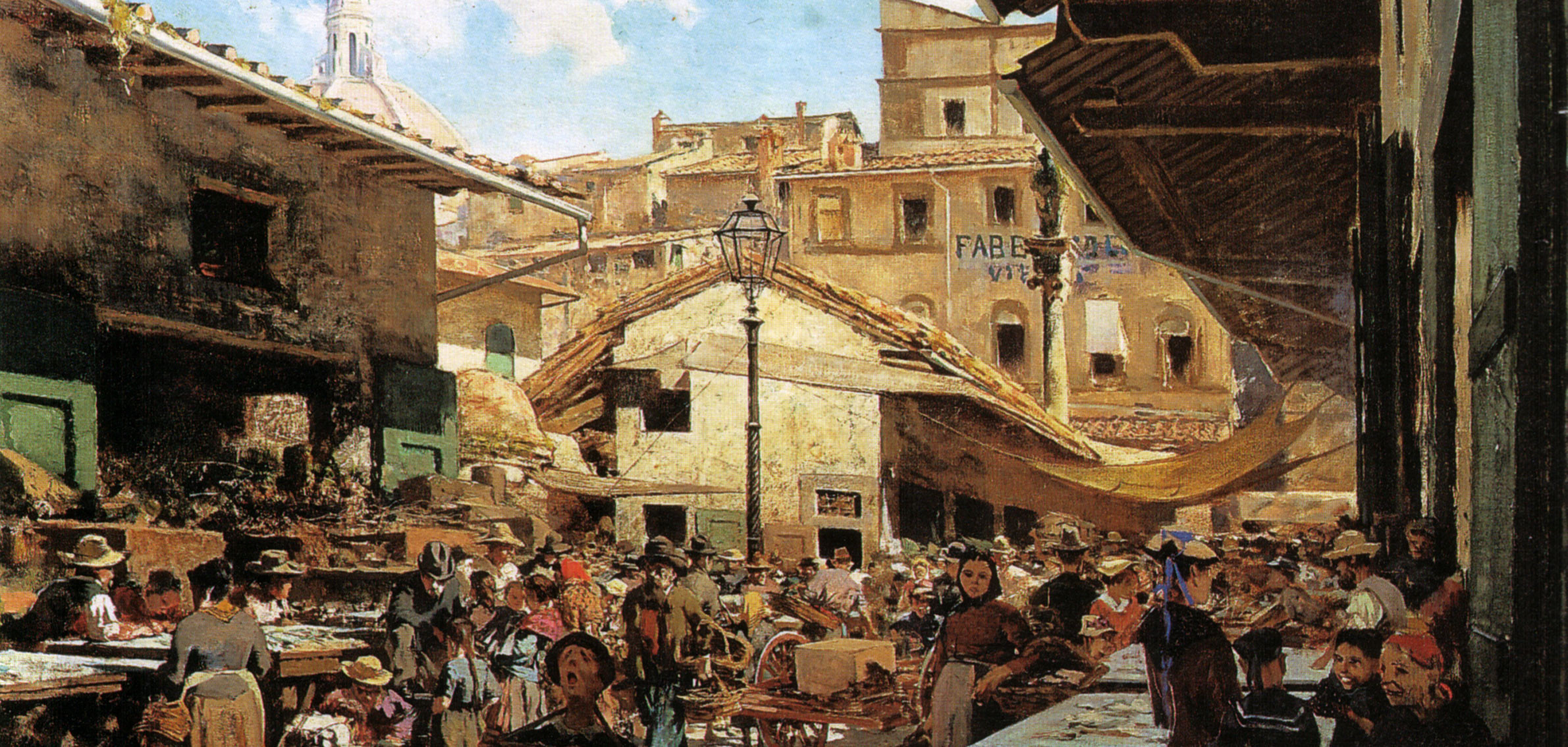
The lost Market
Everyone knows the Mercato Nuovo (New Market) of Florence and the famous Loggia del Porcellino, built in 1547 by Giovanni Battista Tasso.
Here, just a few steps from Ponte Vecchio, in origin was held the trade of silk and precious objects, but over the years this changed. Infact, from the XIX century on only straw hats were sold, and today we can find leather goods and souvenirs.
The Loggia is renowned especially for the Porcellino fountain, actually a boar, copy of the XVII century bronze sculpture by Pietro Tacca which reproduced the Hellenistic marble sculpture donated to Cosimo I by Pope Pius IV in 1560 and now preserved in the Uffizi. The bronze boar with its glossy nose, a result of the constant rubbing by the hand of tourists and florentines in search of luck, is so famous that earned a place in a fairy tale by Hans Christian Andersen and even two appearances in the Harry Potter films.
It is certainly one of the most famous markets in Florence, along with the Central Market in the San Lorenzo area.
Howerver, not everyone knows that this market was called New Market to differentiate it from the much older Mercato Vecchio (Old Market), the nerve center of the Florentine commerce. It was situated in the present Piazza della Repubblica, the ancient Roman Forum in Florentia, and the geographical city center, where in 1431 the Column of Abundance was erected right where the Roman cardus and decumanus intersected.
The Mercato Vecchio square was the public space for commerce, in contraposition with Piazza Duomo which was dedicated to religious affairs and Piazza della Signoria dedicated to politics.
The Mercato Vecchio area already existed at the time of Cosimo I, who made Giorgio Vasari build the Loggia del Pesce (Fish loggia), and it slowly filled with the small popular buildings used both as shop and home.
At the end of the XIX century, this area was demolished along with the Jewish Ghetto, following the reports made by journalist Giulio Puccini about the degradation in which the inhabitants of the historic center lived. This also turned out to be a pretext to "clean up" the area, forcing the humble classes to move out of the city center, and allowing the construction of commercial buildings of interest for the higher classes.
The city "rehabilitation" intervention became part of the plan of Giuseppe Poggi who had already removed the outer walls of the city to build the avenues, and the works began in 1888.
Unfortunately, with the demolition of the square, were lost many artistic and architectural testimonies of the ancient city center, a place with a strong symbolic value.
Tabernacles and churches with artworks mentioned in the texts by Vasari were destroyed along with buildings of historical importance like the houses of the some of the most important Florentine families, including the Medici and the Strozzi. In their place were built big palaces, cafés and hotels, the arc of Triumph and the porches at its sides.
Fortunately not everything was lost, something survived, like Vasari's Loggia del Pesce, dismantled and rebuilt in Piazza dei Ciompi.
Of the original aspect of the square are left only the literary sources and ancient prints and paintings. The Macchiaioli painter Telemaco Signorini loved this square so much, that when it was dismantled and he was asked if the tears he was shedding were for the "rubbish" that was being demolished, in reply he said: "No, I'm crying for the rubbish that's being built."
How can we blame him, as beautiful as may be the present Piazza della Repubblica that we are all accustomed and tied to, the heart bleeds a bit for what has been lost in order to build it.
One wonders what it would be like to walk through the narrow streets of the Mercato Vecchio area, to sit on the steps of the well in the square of the ancient Jewish Ghetto and to admire the Column of Abundance still incorporated in the tiny homes that used to be a place for commerce and for the daily activities of the family of shopkeepers.



